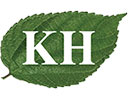Identification of True or Fake Organic Seaweed Iodine by Heating
2023.10.05
1. Theoretical basis
National standard for Seaweed iodine, GB1903.39-2018, stipulates clearly that seaweed iodine shall come only from kelp as raw material, by water extraction, purification, concentration, sterilization, filling and other processes, as a food nutrition enhancer it is made by a pure physical process.
KINGHERBS' kelp extract contains 20% more organic iodine, organic iodine refers to the iodine combined with organic matter, usually combined with fats, amino acids or proteins, such combined organic matters has better thermal stability than inorganic iodine. The inorganic iodine mainly exists in the form of elemental iodine and iodine ion, which are more volatile at high temperature.
As the seaweed iodine is hard to be extracted from kelp, the liquid is very sticky, the production cost is high, few factories know the technology well, while the preparation cost of false seaweed iodine is extremely low, so the false seaweed iodine is popular in the market. The false seaweed iodine was mainly prepared by mixing potassium iodide with water and a small amount of kelp concentrate (containing a small amount of mannitol and fucose). The content of organic iodine and inorganic iodine could not be distinguished by the seaweed iodine standard detection method. The consumption of potassium iodide may react with the potassium iodate, resulting in the formation of elemental iodine, which has the risk of accumulating toxins in the human body.
2. Test method
Based on the principle of different volatilization degree of organic and inorganic iodine at high temperature, the true and false seaweed iodine can be effectively identified:
1. Materials: take 10g of true seaweed iodine containing 4.0% iodine, marked as 1# sample; take another 10g of false one containing 4.0% iodine prepared with food grade potassium iodide and pure water, marked as 2# sample; take Uniodized salt 50g. 100ml crucible 2 pieces, marked as 1# and 2#. 2 volumeric flasks of 250ml, marked as 1#, 2# respectively.
2. Add 10g of non-iodized salt into each of the two crucibles, add 1g of real seaweed iodine into the crucible 1#, and add 1g of fake one into the crucible 2#. Stir both crucibles well to get two parts of iodized salt for use.
3, prepare the Muffle furnace (electric baking box), set the temperature at 200℃, preheat to 200℃, then put these 2 crucibles into the furnace, heating 30 minutes at constant temperature of 200℃, then take out for cooling down.
4. Add an appropriate amount of distilled water into these 2 crucibles and stir to fully dissolved. Pour the dissolved liquid from crucibles 1# and 2# into volumetric flasks 1# and 2# respectively, then add distilled water to 250 ml of constant solution and stir well. At this time, observe the color of the solution in both volumetric flasks, the 1# solution from KINGHERBS' true seaweed iodine is brown, and the 2# solutionis is light yellow, the colors are obviously different.
5. Measure the iodine content in the solution from the 2 flasks by titration method, the iodine volatilization loss rate differs. The loss rate of true seaweed iodine from flask 1# was about 2.5%, while that of false one was about 9%.Compared with inorganic iodine, the true seaweed iodine is more stable and less volatile in heat, even though there might be a small amount of seaweed iodine in the fake one.
 Share
Share


